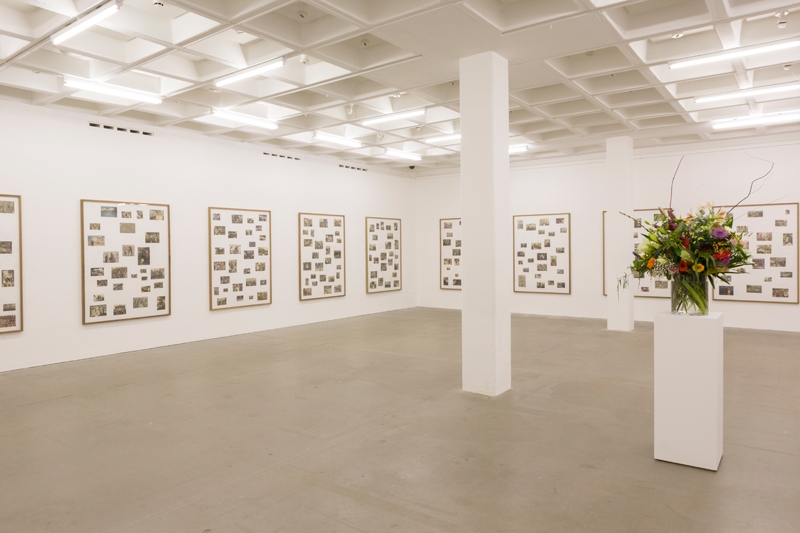Expressions of anger, frustration, sorrow and grief fill Willem de Rooij’s Index: Riots, Protest, Mourning and Commemoration (as represented in newspapers, January 2000 – July 2002) (2003). The work comprises 18 framed panels crammed with constellations of images, culled from magazines and newspapers, depicting protest marches, riots and vigils. Interrogating the aesthetics of protest and commemoration, de Rooij’s collection exposes the ways in which the media frame such events and how participants choose to stage themselves for the camera. While a broad range of political and geographical contexts are included, there are striking similarities among these captionless images (punching the air is common, as is crying, and protesters of all stripes seem to enjoy shouting and burning things). Accompanying Index is Bouquet V (2010), which, as its title suggests, is a large bouquet of flowers perched on a plinth. Comprising single stems from 95 different species, the work deliberately avoids any hierarchy, speaking to the diversity and tension between the politics of collectivism and individualism – a reading underscored by the flowers’ proximity to de Rooij’s images of protest.
Considering this is a rare solo exhibition for the Dutch artist, it is surprising that only two works are included; moreover, that they are not particularly recent. Indeed, Index is over a decade old. By this choice, de Rooij encourages a consideration of a specific historical period. The years represented here, which, among other things, cover the 9/11 terror attacks and the subsequent build-up to the invasion of Iraq, are certainly poignant. But how might this work appear if it were extended to included images of the many antiwar marches of 2003, or more recent anticapitalist demonstrations, or Arab Spring protests? One suspects there would actually be little difference. For sure, banners and placards would change, but the displays of raw emotion, from sorrow to outrage, would persist.
In this, Index recalls Aby Warburg’s epic Mnemosyne Atlas, started in 1927 and left unfinished at the time of his death in 1929. The collection of 79 wooden panels, covered with some 971 photographs arranged into various categories, with room for planned additions, attempted to map the ‘afterlife of antiquity’, demonstrating the ways in which particular motifs, gestures and emotions reappear throughout the history of art and visual culture. Though less anachronistic, de Rooij’s work similarly points to an emotional and behavioural continuity. Mnemosyne Atlas does not include a category for ‘protest’, but many of the images in this exhibition would not seem out of place in Warburg’s idiosyncratic archive. Yet, while de Rooij asks who controls the way in which such images are constructed and presented, the question must also be turned on the artist, whose process of selecting and editing, like Warburg’s, may not be entirely impartial.
This article was first published in the January & February 2015 issue.
